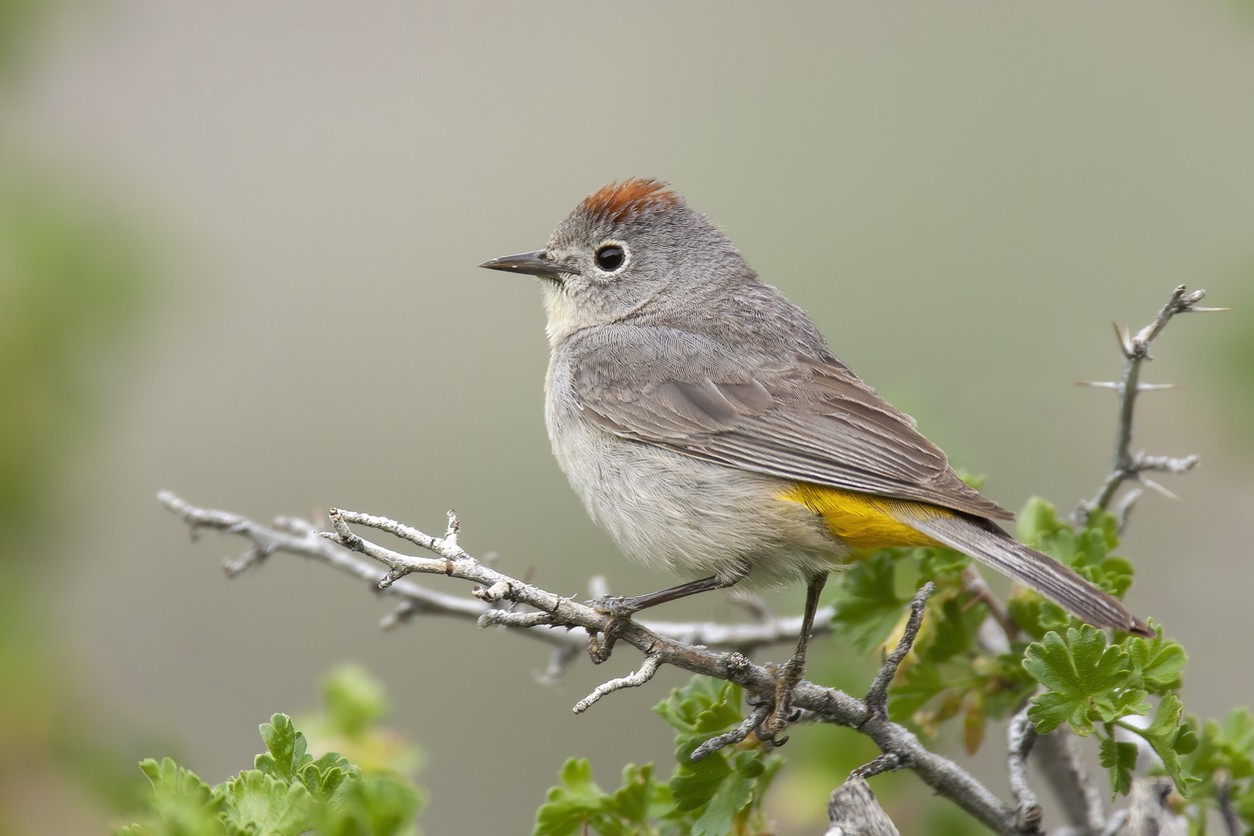Virginia's Warbler
A species of Leiothlypis Warblers Scientific name : Leiothlypis virginiae Genus : Leiothlypis Warblers
Virginia's Warbler, A species of Leiothlypis Warblers
Botanical name: Leiothlypis virginiae
Genus: Leiothlypis Warblers
Content
Description General Info

Description
Virginia's warbler is a small bird, only 4 to 4 ⁄2 inches (100 to 110 mm) in length. It is mainly gray in color, with a lighter colored under-belly and a white eye ring. The rump and undertail coverts are yellow. They also have a yellow patch on their breast and a partially hidden dark reddish crest. Females are slightly duller, with less yellow on breast. Virginia's warbler can be easily mistaken for the rare Colima warbler, but it is smaller, has a more yellow rump, and is more widespread. Colima Warbler also lacks yellow breast patch. 
Size
8 - 13 cm
Life Expectancy
4-6.2 years
Nest Placement
Ground
Clutch Size
3 - 5 eggs
Incubation Period
1 brood
Number of Broods
11 - 14 days
Nestling Period
10 - 14 days
Feeding Habits
Virginia's Warbler's diet is mostly insectivorous, foraging from foliage, especially from oaks and maples. They eat caterpillars, spiders, ants, weevils, stinkbugs, and other flying insects, occasionally supplementing with nectar, flowers, and new foliage.
Habitat
Virginia's Warbler predominantly inhabits open, high-elevation areas such as the piñon-juniper and oak woodlands, favoring steep slopes with shrubby ravines. These birds thrive in environments interspersed with thickets of mountain mahogany and mixed-conifer forests, particularly in places like the Mogollon Rim. They show a preference for altitudes that feature scrubby vegetation and brushy cover near streamsides. During migration, virginia's Warbler selects pine forests and wooded areas adjacent to creeks, while wintering grounds include thorn scrub and tropical deciduous forests in Mexico.
Nest Behavior
The virginia's Warbler pair inspects sites together, and the female constructs the nest.
Nest Characteristics
Virginia's Warbler's nest is a concealed ground site, often beneath a root or rock, at the base of grass clumps, oaks, or New Mexico locusts, typically on a steep slope. The cup-shaped nest is made of grass and plant material, lined with fine grasses and hairs.
Dite type
Insectivorous
General Info
Feeding Habits
Bird food type
Bird Feeder Type

Platform
Sounds
Call
Recording location: Mexico
Song
Recording location: United States
Behavior
Virginia's Warbler's are typically active during the day, engaging in foraging behaviors within mid-levels of pinyon-juniper forests. They exhibit a distinct tail-wagging movement while hopping in search for insects, which forms a significant part of their diet. Territory is defended through melodic claims broadcasted from elevated perches, while males may sing to attract and mate with one, occasionally two females within a breeding season. These bonds are commonly short-lived, spanning only the duration of the season. On breeding grounds, virginia's Warbler's are often found in pairs, yet they demonstrate a social inclination by forming mixed-species flocks with other warblers during migration and wintering periods, evidencing a complex interaction with their habitat and fellow avian species.


Scientific Classification
Phylum
Chordates Class
Birds Order
Perching birds Family
New world warblers Genus
Leiothlypis Warblers Species
Virginia's Warbler